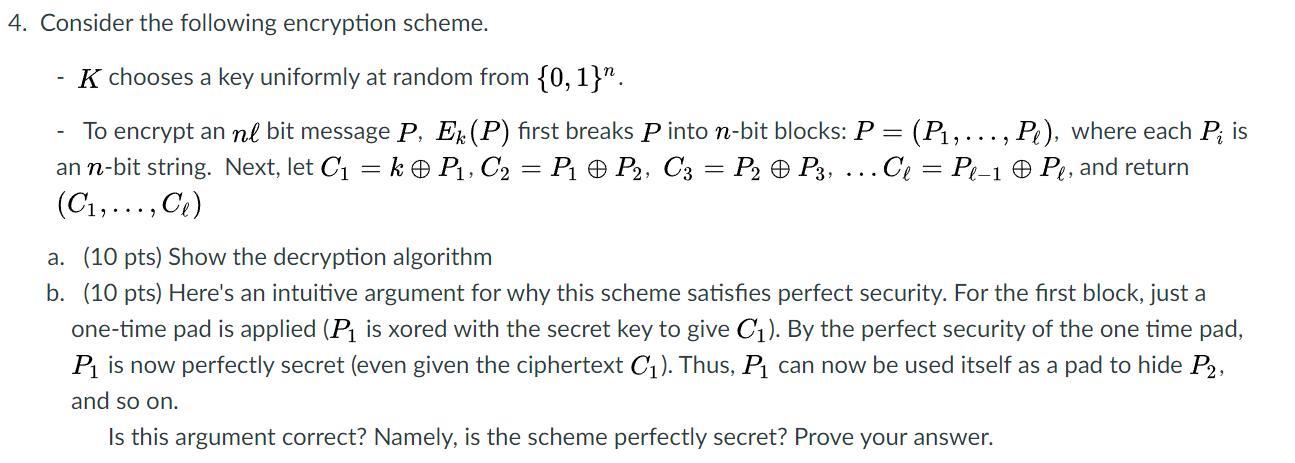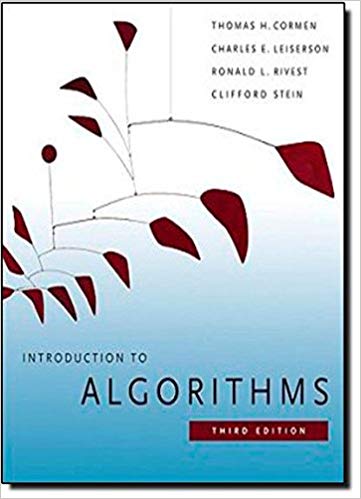Question
4. Consider the following encryption scheme. K chooses a key uniformly at random from {0, 1}. To encrypt an nl bit message P, Ek

4. Consider the following encryption scheme. K chooses a key uniformly at random from {0, 1}. To encrypt an nl bit message P, Ek (P) first breaks Pinto n-bit blocks: P = (P,..., P), where each P is an n-bit string. Next, let C = k P, C = P P, C3 = P P3, Ce = Pe-1 Pe, and return (C,..., Ce) - a. (10 pts) Show the decryption algorithm b. (10 pts) Here's an intuitive argument for why this scheme satisfies perfect security. For the first block, just a one-time pad is applied (P is xored with the secret key to give C). By the perfect security of the one time pad, P is now perfectly secret (even given the ciphertext C). Thus, P can now be used itself as a pad to hide P2, and so on. Is this argument correct? Namely, is the scheme perfectly secret? Prove your answer.
Step by Step Solution
There are 3 Steps involved in it
Step: 1

Get Instant Access to Expert-Tailored Solutions
See step-by-step solutions with expert insights and AI powered tools for academic success
Step: 2

Step: 3

Ace Your Homework with AI
Get the answers you need in no time with our AI-driven, step-by-step assistance
Get StartedRecommended Textbook for
Introduction to Algorithms
Authors: Thomas H. Cormen, Charles E. Leiserson, Ronald L. Rivest
3rd edition
978-0262033848
Students also viewed these Programming questions
Question
Answered: 1 week ago
Question
Answered: 1 week ago
Question
Answered: 1 week ago
Question
Answered: 1 week ago
Question
Answered: 1 week ago
Question
Answered: 1 week ago
Question
Answered: 1 week ago
Question
Answered: 1 week ago
Question
Answered: 1 week ago
Question
Answered: 1 week ago
Question
Answered: 1 week ago
Question
Answered: 1 week ago
Question
Answered: 1 week ago
Question
Answered: 1 week ago
Question
Answered: 1 week ago
Question
Answered: 1 week ago
Question
Answered: 1 week ago
Question
Answered: 1 week ago
Question
Answered: 1 week ago
Question
Answered: 1 week ago
Question
Answered: 1 week ago
Question
Answered: 1 week ago
View Answer in SolutionInn App



